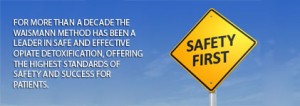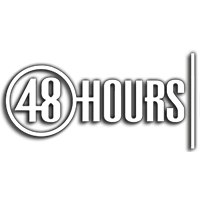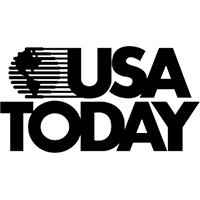
The myths about rapid detox
The Waismann Method ® rapid opiate detoxification procedure oftentimes gets compared to other rapid detox programs. However, there is a HUGE, fundamental difference between the two… One that can come at the cost of the patients’ own physical safety and well-being.
Other Rapid Detox programs may be cheaper, but they definitely are not safer.
Rapid Drug Detox Myths
Rapid Drug Detox Myth 1:
It’s safe to perform Rapid Drug Detox in an outpatient “hospital” setting, like a surgery center or office.
FALSE – Rapid opiate detoxification is a very serious procedure, and can potentially be dangerous when not performed properly or in an accredited full-service hospital where most medical resources and specialists are available immediately. Long-term use of opiates and other drugs can cause undetected medical conditions, so it is imperative that all patients have proper medical screening, hydration and pre-medication the day before the procedure, as well as professional monitoring for a few days following the procedure to ensure stability and minimize complications.
For over 25 years, people from all over the world have chosen Waismann Method as their opioid detox provider.
We know the challenges you face and the importance of creating a unique and personal experience for you right from the start.Call for Detox Options 1-800-423-2482
Rapid Drug Detox Myth 2:
It’s safe for rapid opiate detox to be completed in 24 hours.
FALSE – To optimize safety, facilities should admit patients at least the day before the procedure. Therefore medical staff can monitor them in the ICU for at least a day after a rapid opiate detox procedure. During this time, staff must carefully monitor a patient’s heart, lungs, electrolytes and fluid balance. This time in the hospital is critical to a patient’s well-being and the success of the procedure. This monitoring time is critical to a patient’s well-being and the success of the procedure. A physician can complete a detox procedure in a couple of hours or less. However, it usually takes the body at least a few days to stabilize physically and chemically. So it’s important to have proper assistance and monitoring for at least a few days after.
Rapid Drug Detox Myth 3:
It’s safe to be under general anesthesia for several hours for rapid detox to work.
FALSE – Not only is general anesthesia unnecessary for this kind of procedure, but it can also be significantly more dangerous and uncomfortable for patients. Some programs put patients under general anesthesia for 4-8 hours. However, a safer and better-tolerated procedure can occur in only 1-2 hours under moderate to heavy sedation (twilight sleep) when administered properly. Older protocols required patients to be under anesthesia for longer periods of time. Whereas, current medical advances allow for much shorter periods with less risk.
If physicians do not adequately pre-medicate patients prior to the detox procedure, then they need to use general anesthesia to help control the physical effects of withdrawal. If the patient receives appropriate premedication, then general anesthesia is not required and sedation is sufficient to ensure that the patient has no memory of the procedure. With adequate pre-medication and sedation, physicians can perform the procedure safely. Thus, there is no need for a breathing tube, ventilator and 4-8 hours of general anesthesia.
Rapid Drug Detox Myth 4:
It is safe to go home or to a hotel with a family member immediately after rapid detox.
FALSE – Some treatment centers send patients home or to hotel rooms to recover. In reality, they are at much higher risk of serious complications. For example, dehydration, pulmonary/cardiac events and even death can occur. In addition, trained medical professionals should monitor and address the emotional and physical changes that can occur post-rapid detox. This is in order to assist basic organ function regulation and prevent medical complications. Family members and friends are simply not capable of recognizing and treating the possible physical changes that take place afterward. Moreover, they aren’t equipped to deal with the emotional instability in patients due to lack of endorphins, anxiety and sometimes depression, which can lead to immediate relapse.
Rapid Drug Detox Myth 5:
It’s safe to go home immediately after the rapid detox procedure.
FALSE – It’s crucial for the medical team to assess the patient’s physical and emotional state for long-term success. Additionally, facilities should provide aftercare options that address their individual needs. Opiates are numbing devices that a majority of patients use to mask physical or psychological pain. Therefore, once a patient detoxes, trained professionals must address the root cause of any underlying issues so true healing can begin.
Learn more about the best treatment options for opiate addiction.






